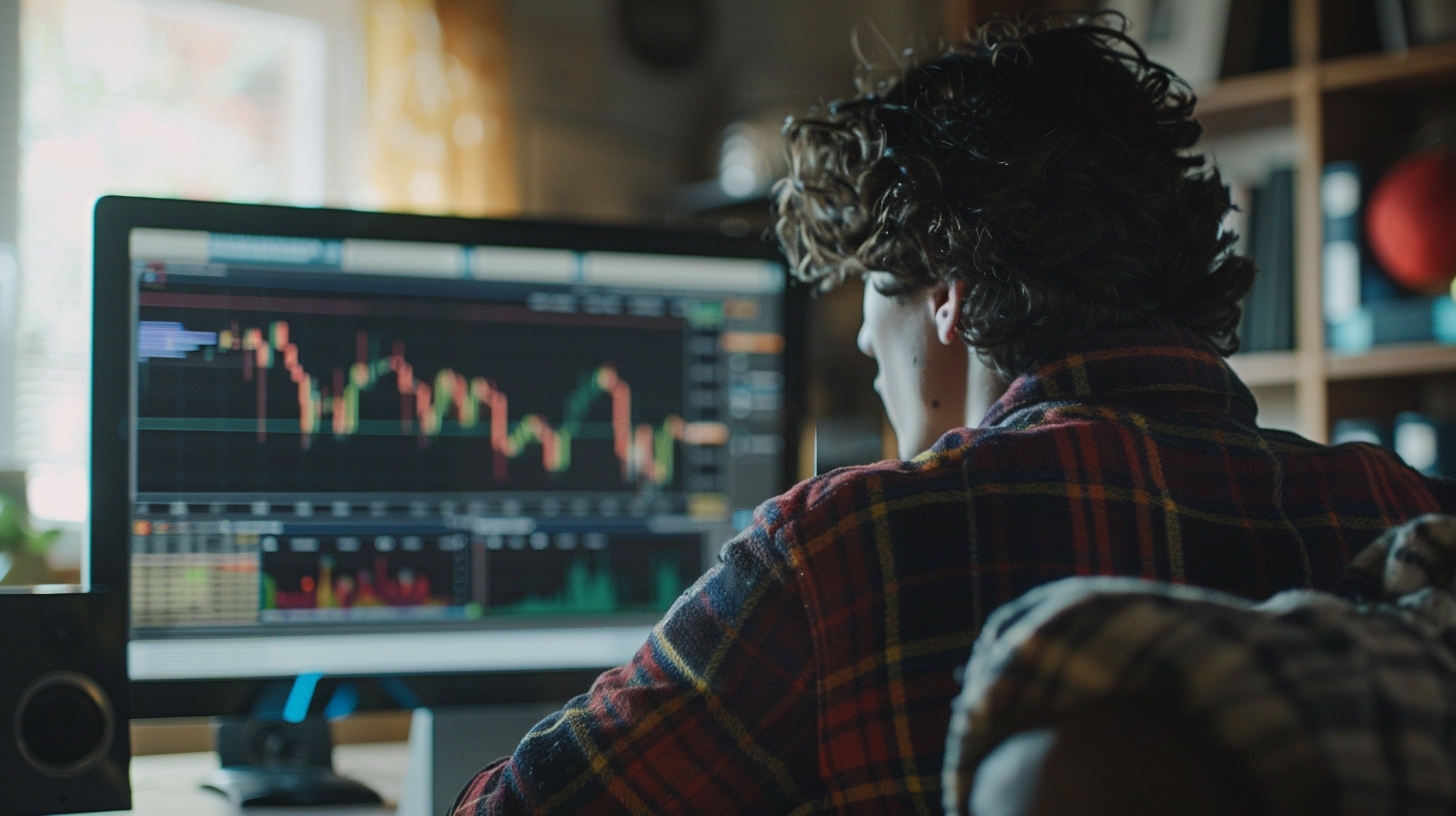Day Trader: Methods and Risks

What Is a Day Trader?
A day trader is a trader who executes a high volume of short and long trades to take advantage of intraday market price movements. The primary goal is to profit from very short-term price fluctuations. Day traders often use leverage to enhance returns, although this can also increase potential losses.
Day traders employ various strategies, aiming to exploit temporary supply and demand inefficiencies resulting from asset purchases and sales. Positions are typically held for brief periods, ranging from milliseconds to hours, and are generally closed out by the end of the trading day to avoid holding any risk overnight or after hours.
Understanding Day Traders
Becoming a day trader does not require any special qualifications. Instead, day traders are identified by the frequency of their trades. According to the Financial Industry Regulatory Authority (FINRA) and the U.S. Securities and Exchange Commission (SEC), day traders are those who make four or more trades within a five-day period, provided these trades account for more than 6% of the customer’s total trading activity during that time, or if their brokerage/investment firm classifies them as such.
Day traders typically close all trades before the end of the trading day to avoid holding open positions overnight. Their effectiveness can be impacted by the bid-ask spread, trading commissions, and the costs of real-time news feeds and analytics software. Successful day trading demands extensive knowledge and experience. Day traders use various methods for making trading decisions, including computer models that apply technical analysis to predict favorable outcomes, as well as instinct-based trading.
Day traders must meet specific capital and margin maintenance requirements.
The primary focus of a day trader is on the price action characteristics of a stock, in contrast to investors who rely on fundamental data to evaluate a company’s long-term growth potential and decide whether to buy, sell, or hold the stock.
Price volatility and the average daily range are crucial for day traders. A security must exhibit sufficient price movement to enable a day trader to achieve a profit. Volume and liquidity are also essential because quick entry and exit from trades is necessary to capture small profits per trade. Therefore, securities with a small daily range or low daily volume are typically not of interest to day traders.
Pattern Day Trader Designation
A Pattern Day Trader (PDT) is a regulatory classification for traders or investors who complete four or more day trades within five business days using a margin account.
To be designated as a PDT, these day trades must account for more than 6% of the total trade activity in the margin account during that five-day period. If this criterion is met, the broker will flag the trader’s account as a PDT. This designation imposes specific restrictions on future trading activities, aimed at discouraging excessive trading behavior.
Day Trader Techniques
Day traders are highly responsive to events that trigger short-term market movements. One popular technique is trading the news. Scheduled announcements, such as economic statistics, corporate earnings, or interest rate decisions, can significantly impact market psychology and expectations. When actual outcomes differ from expectations, markets often react with sharp, significant moves, creating opportunities for day traders.
Another method is fading the gap at the open. This involves taking a position opposite to the direction of the price gap between the previous day’s close and the current opening price. On days without major news or significant gaps, day traders may focus on the overall market direction early in the morning.
If they anticipate an upward market trend, they buy securities showing strength during price dips. Conversely, if the market is trending downward, they short securities showing weakness during price bounces.
Most independent day traders work relatively short hours, typically two to five hours per day. They often spend several months practicing simulated trades before engaging in live trading. By tracking their successes and failures compared to the market, they aim to improve their strategies through experience.
Day Trader Strategies
Day traders employ various intraday strategies, including:
1. Scalping: This strategy aims to make numerous small profits from minor price changes throughout the day, often capitalizing on short-lived arbitrage opportunities.
2. Range Trading: This approach uses support and resistance levels to guide buy and sell decisions. When positions are held for weeks instead of hours or days, it may also be referred to as swing trading.
3. News-Based Trading: This strategy takes advantage of the increased volatility surrounding news events and headlines, seizing trading opportunities as they arise.
4. High-Frequency Trading (HFT): These strategies employ sophisticated algorithms to exploit small or short-term market inefficiencies, often executing several thousand trades in a single day.
Advantages and Disadvantages of Day Trading
No Overnight Moves
A key advantage of day trading is avoiding the impact of negative overnight news, which can significantly affect the price of securities. Such news includes important economic and earnings reports, as well as broker upgrades and downgrades that occur before the market opens or after it closes.
Higher Margins and Easier Exits
Day trading allows for the use of tight stop-loss orders to minimize losses on long positions. Additionally, day traders have increased access to margin, providing greater leverage. This trading style also offers more opportunities for learning through frequent trading activities.
Higher Costs
A drawback of day trading is the potential lack of time for positions to become profitable. Additionally, frequent trading leads to higher commission costs, which can reduce profit margins.
Higher Risks
Day traders engaging in short selling or using margin to leverage long positions may quickly experience amplified losses, potentially resulting in margin calls.
Pros
– Positions are typically closed by the end of the day, avoiding risks from overnight news or off-hours broker moves.
– Tight stop-loss orders can protect against extreme price movements.
– Traders have access to increased leverage and lower commissions.
– Frequent trades provide extensive hands-on learning experience.
Cons
– Frequent trades result in multiple commission costs.
– Some assets, like mutual funds, are not suitable for day trading.
– Positions may not have sufficient time to realize a profit before needing to be closed.
– Losses can accumulate quickly, especially when using margin, leading to the risk of margin calls.
Example of Day Trading
Zack is a day trader who relies on technical analysis for his trades using his brokerage account. By analyzing price trends throughout the day, he can predict short-term movements and secure small profits multiple times daily.
On a typical trading day, Zack monitors metrics such as the Relative Strength Index (RSI) and the Intraday Momentum Index to determine if a stock is oversold or undersold. He may also engage in margin trading to amplify his profits and use stop-loss orders to exit positions quickly if the market moves against him.
For Zack to be a successful day trader, he aims to have more profitable trades than losing ones throughout the day. However, a single bad trade can wipe out his margin position. Due to this risk, day trading is often likened to “picking up pennies in front of a steamroller.”
Day Trading vs. Other Types of Trading
Day trading is one of several strategies used by professional stock traders. Unlike other traders, day traders seek predictable price patterns and small corrections within a single trading day. Although the profits from these trades are relatively small, they can accumulate over time. Day traders typically close their positions at the end of the trading day, minimizing their exposure to overnight market fluctuations.
In contrast, swing traders aim to anticipate the peaks and troughs of a stock’s price movements over a longer period, often weeks or months. With an effective strategy, swing traders can achieve higher profits than intraday traders, but they need to invest more time in identifying suitable stocks.
Similarly, trend traders analyze a stock’s momentum and moving averages to predict whether it is likely to move higher or lower. They buy stocks with strong upside potential or short those expected to trend downward. Trend traders often rely on chart patterns and technical indicators in their forecasts.
How to Become a Day Trader
Becoming a successful day trader requires significant personal discipline. Novice traders should anticipate losing money as they learn the intricacies of the market and be mentally prepared for potential losses throughout their careers.
Day trading demands extensive research, not only into the fees and commissions associated with trades but also the relevant taxes and regulations. For instance, day traders must be aware of the wash sale rule, which prohibits the repeated buying and selling of the same security within a 30-day period. Additionally, they should fully understand the risks involved, particularly when trading on margin.
How Much Can I Make Day Trading?
While most day traders lose money, some do manage to make a profit. According to Zippia, successful day traders earn an average income of about $117,000 per year, or roughly $56 per hour. However, solo day traders must trade with their own money, which involves much greater risk compared to a typical salary.
The Bottom Line
Day traders capitalize on extremely short-term price changes in the stock or forex market to accumulate profits throughout the trading day. Although day trading can be profitable, it also carries a high degree of risk, especially for those using margin positions. Beyond a thorough understanding of the stock market, day traders must exercise self-control and avoid impulsive mistakes.


 Русский
Русский  Español
Español  Deutsch
Deutsch  Indonesian
Indonesian  Português
Português  Français
Français  Nederlands
Nederlands  Italiano
Italiano  中文
中文  عربي
عربي  Türkçe
Türkçe 

